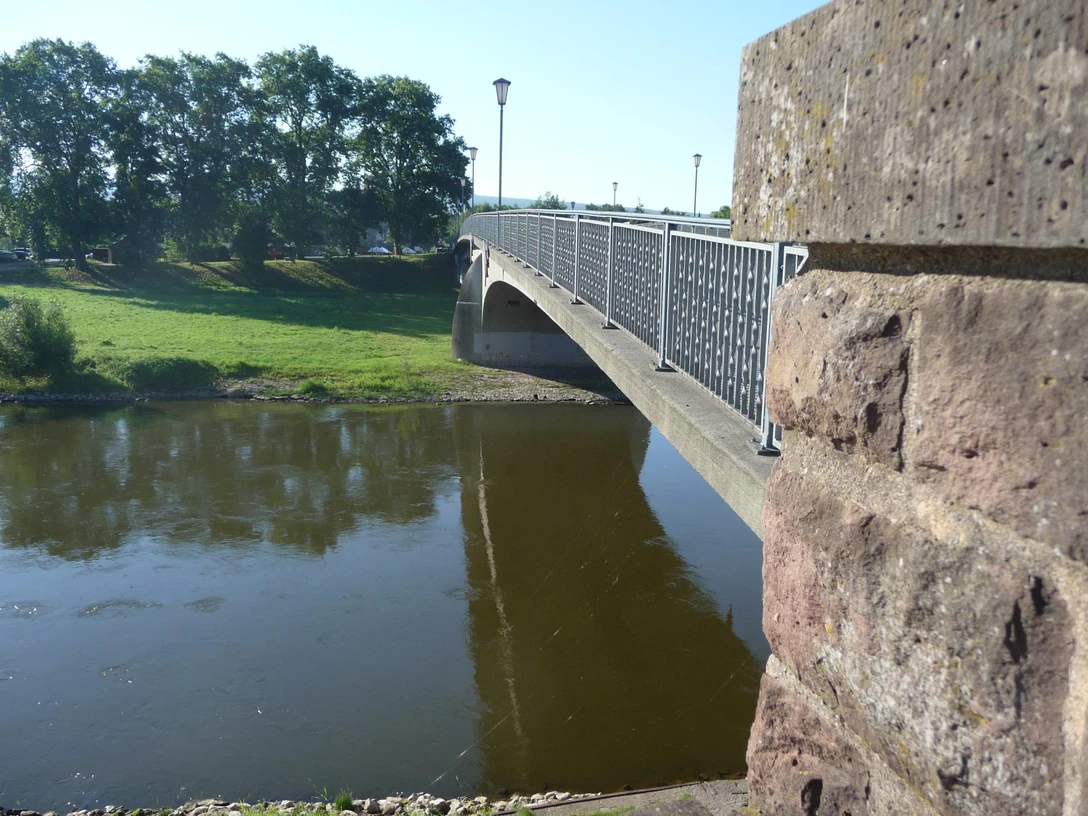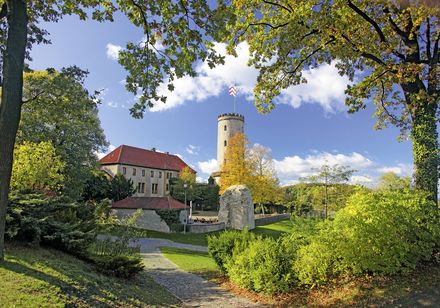In the Middle Ages, Höxter was the crossroads of the Hellweg, which connected the Lower Rhine with the Harz region, and the Bremer Straße, which travelled from southern Germany via Frankfurt to the Hanseatic city of Bremen. These two long-distance trade routes and the Weser Bridge made a decisive contribution to the economic prosperity of the town. The Weser Bridge, first documented in 1115, is the oldest fixed crossing on the entire Weser.
Until the 13th century, it was unrivalled on the Upper Weser. Bridges were then also built in Corvey, Hann. Münden and Bodenwerder. The construction of the Corvey bridge in particular exacerbated the conflict between the abbey and the town of Höxter and led to the destruction of the town of Corvey and its bridge in 1265.
The bridge was not only a blessing for the town's inhabitants, but also the cause of bloody wars and raids, secured to the town by the Bridge Gate and to the Solling by the Dark Gate. In the Night of Blood in Höxter (1634), for example, the wife of the town clerk Justus Koven threw herself and her children from the bridge into the Weser floods to escape maltreatment by imperial troops.
The bridge in Höxter was demolished by French troops in 1673 and it was not until 1833 that a new bridge was inaugurated.
Until the 13th century, it was unrivalled on the Upper Weser. Bridges were then also built in Corvey, Hann. Münden and Bodenwerder. The construction of the Corvey bridge in particular exacerbated the conflict between the abbey and the town of Höxter and led to the destruction of the town of Corvey and its bridge in 1265.
The bridge was not only a blessing for the town's inhabitants, but also the cause of bloody wars and raids, secured to the town by the Bridge Gate and to the Solling by the Dark Gate. In the Night of Blood in Höxter (1634), for example, the wife of the town clerk Justus Koven threw herself and her children from the bridge into the Weser floods to escape maltreatment by imperial troops.
The bridge in Höxter was demolished by French troops in 1673 and it was not until 1833 that a new bridge was inaugurated.
Good to know
Payment methods
no entrance possible
License (master data)
Tourist-Information Höxter
Nearby







































